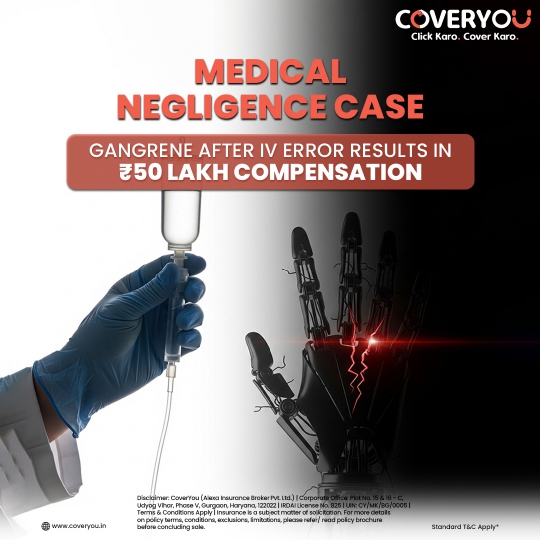Understanding Professional Indemnity Insurance :
Professional Indemnity Insurance is a specialized form of coverage designed to protect professionals, including physicians, from the financial ramifications of claims alleging professional negligence, errors, or omissions in the services they provide. Tailored to the specific risks associated with a professional’s line of work, this insurance is particularly crucial for healthcare practitioners facing potential allegations of medical malpractice or failure to meet the standard of care. The coverage encompasses legal defense costs, settlements, and judgments, serving as a financial safety net during legal challenges. The structure of Professional Indemnity Insurance can be claims-made or occurrence-based, with considerations for limits and deductibles influencing policy costs. Tail coverage, or extended reporting period coverage, is often employed to bridge potential gaps in protection when a claims-made policy is not renewed.
Understanding the claims process is essential, with prompt notification, provision of relevant documentation, and active participation in the defense being key components. While comprehensive, policies have exclusions that necessitate careful review, and proactive risk management measures, such as maintaining detailed records and effective communication, can help reduce the likelihood of claims. Continuous coverage is vital, and physicians benefit from decoding the legal terminology within policies. Ongoing education and advocacy within the medical community empower physicians to make informed decisions, ensuring their Professional Indemnity Insurance aligns with their evolving needs and provides a steadfast foundation for their professional practice.
Common Misconceptions :
Myth 1: “I Don’t Need Professional Indemnity Insurance – I’m a Careful Physician”
Misconception: Some physicians believe that their meticulous approach to patient care and adherence to best practices make them immune to potential malpractice claims, leading them to perceive Professional Indemnity Insurance as unnecessary.
Reality: While being a careful and diligent physician is commendable, the reality of the healthcare landscape is that even the most conscientious professionals can face unforeseen challenges and allegations of malpractice. Professional Indemnity Insurance provides a crucial layer of protection by covering legal expenses, settlements, and judgments in the event of a malpractice claim.
Case Study: The Unforeseen Complication
Consider the case of Dr. Smith, a highly regarded surgeon known for his precision and dedication to patient safety. Dr. Smith performed a routine surgery, and everything seemed to go smoothly. However, weeks later, a patient experienced unexpected complications that were unrelated to Dr. Smith’s actions but were attributed to the surgery.
The patient, facing additional medical expenses and emotional distress, decided to file a malpractice claim against Dr. Smith. Despite Dr. Smith’s careful practices and adherence to the standard of care, he found himself embroiled in a legal battle.
In this scenario, having Professional Indemnity Insurance would have been instrumental for Dr. Smith. The insurance coverage would have not only addressed the financial aspects of the claim, covering legal fees and potential settlements, but it would have also provided support in navigating the complex legal process.
Myth 2: “My Employer’s Insurance Covers Me”
Misconception: Some physicians believe that their employer’s insurance policies, such as institutional malpractice coverage, fully protect them in case of malpractice claims, leading them to assume they don’t need individual Professional Indemnity Insurance.
Reality: While institutional insurance may provide some level of coverage, it often comes with limitations. It primarily safeguards the institution’s interests and may not fully address the individual physician’s needs, leaving potential gaps in coverage for legal expenses, individual liability, and tailored protection.
Case Study: The Limits of Institutional Coverage
Dr. Johnson, a dedicated physician working in a large hospital, assumed that the institution’s malpractice insurance would sufficiently cover any legal issues arising from patient care. During a complicated surgical procedure, an unforeseen complication occurred, resulting in a patient filing a malpractice claim against both the hospital and Dr. Johnson individually.
As the legal proceedings unfolded, Dr. Johnson discovered that the institutional coverage had limits, and the legal representation provided was more aligned with protecting the hospital’s interests than addressing his specific needs. The financial burden of hiring additional legal support and potential personal liability became evident.
In this scenario, having individual Professional Indemnity Insurance would have been crucial for Dr. Johnson. His policy could have provided tailored coverage, ensuring that his interests and potential liabilities were adequately addressed. It would have covered legal fees, settlements, and judgments specific to his role and actions, offering comprehensive protection beyond the institutional coverage.
Myth 3: “All Professional Indemnity Insurance Policies Are the Same”
Misconception: Some physicians believe that all Professional Indemnity Insurance policies are standardized and offer identical coverage, leading to a misconception that it doesn’t matter which policy they choose.
Reality: Professional Indemnity Insurance policies can vary significantly in terms of coverage, exclusions, limits, and additional features. It is crucial for physicians to carefully review and select a policy that aligns with their specific practice, potential risks, and individual needs.
Case Study: The Varied Landscape of Professional Indemnity Insurance Policies
Dr. Rodriguez, a general practitioner, assumed that any Professional Indemnity Insurance policy would provide adequate protection for her practice. When she experienced a claim related to an alleged misdiagnosis, she discovered the nuances of different policies.
Dr. Rodriguez’s chosen Professional Indemnity Insurance policy had limitations in coverage for certain procedures and did not include coverage for the legal costs associated with her defense. This left her facing unexpected financial burdens and challenges in mounting a robust defense against the claim.
In contrast, a colleague, Dr. Chen, who specialized in a similar field, had carefully chosen a Professional Indemnity Insurance policy that specifically addressed the risks associated with their specialty. Dr. Chen’s policy provided coverage for legal expenses had tailored coverage for specialized procedures, and included risk management support.
This case highlights the misconception that all Professional Indemnity Insurance policies are interchangeable. The reality is that policies can vary in terms of coverage scope and features. Physicians must thoroughly review policy terms, consider their specific practice, and choose a policy that not only meets regulatory requirements but also aligns with the unique challenges and risks associated with their medical specialty.
Myth 4: “My State’s Caps on Damages Protect Me”
Misconception: Some physicians believe that the existence of caps on damages in their state shields them from significant financial liabilities in malpractice claims, leading to the assumption that additional insurance coverage may be unnecessary.
Reality: While caps on damages can limit the amount a complainant can recover in a malpractice lawsuit, they may not fully protect physicians, especially in cases of severe harm or when legal costs exceed the capped amount. Professional Indemnity Insurance remains crucial to cover legal expenses, settlements, and judgments beyond the state-imposed limits.
Case Study: The Unforeseen Severity of a Claim
Dr. Patel, an experienced obstetrician in a state with caps on malpractice damages, faced a claim related to a complex delivery that resulted in severe complications for the newborn. While the state’s caps initially seemed reassuring, the severity of the case meant that legal costs and potential settlements far exceeded the capped amount.
Dr. Patel found that the state-imposed limits did not fully shield him from the financial repercussions of the claim. The legal defense costs alone surpassed the cap, leaving Dr. Patel exposed to significant personal liability.
In contrast, Dr. Kim, another obstetrician in a similar situation, had secured comprehensive Professional Indemnity Insurance. This provided coverage beyond the state-imposed caps, ensuring that legal expenses and potential settlements were fully addressed. Dr. Kim was able to navigate the legal proceedings with the support of the insurance coverage, avoiding substantial personal financial strain.
Myth 5: “I’m Retired, So I Don’t Need Professional Indemnity Insurance”
Misconception: Retired physicians may believe that since they are no longer actively practicing, they are immune to malpractice claims and, therefore, do not require Professional Indemnity Insurance.
Reality: Retired physicians still face potential liability for actions taken during their active practice, and malpractice claims can arise even after retirement. Professional Indemnity Insurance is essential to cover any claims related to past practices, ensuring financial protection and peace of mind during retirement.
Case Study: The Lingering Legal Challenges
Dr. Anderson, a retired surgeon, believed that after decades of successful practice, his risk of facing a malpractice claim was minimal. However, a claim emerged regarding a surgical procedure performed years earlier. Despite retirement, Dr. Anderson found himself deeply involved in a legal battle.
His initial assumption that he no longer needed Professional Indemnity Insurance was challenged, as the claim related to a past practice and occurred after his retirement. Without the protection of insurance, Dr. Anderson faced not only potential financial strain in defending the claim but also the risk of personal assets being at stake.
In contrast, Dr. Lewis, another retired physician in a similar situation, had maintained Professional Indemnity Insurance that included tail coverage. This ensured that he was protected against claims arising from his past practice, even after retirement. The insurance covered legal expenses, potential settlements, and provided the necessary support during the legal proceedings.
{The real names are not disclosed.}
Benefits of Professional Indemnity Insurance from CoverYou
- Trusted By 75+ Medical Associations Pan India: Your trusted partner with a network spanning 75+ medical associations across India.
- 10000+ Medico Legal Lawyers From Pan India: Access to 10000+ legal lawyers experts from all over India.
- 2-Hour Lawyer Allocation Promise: Swift allocation of a lawyer within 2 hours for your peace of mind.
- Cashless Claim Settlement: Hassle-free, cashless claim settlements when you need it most.
- 80% Savings On Premium: Save big with our cost-effective premium solutions.
- Run-off Cover: Run-off covеr еnsurеs continuеd insurancе protеction bеyond rеtirеmеnt safеguarding against potential claims arising from еvеnts that occurrеd during thе policyholdеr’s activе covеragе pеriod.
- 200+ Senior Doctors For 2nd Level Opinion: Expert advice from over 200 senior doctors for added confidence.
- 360° Protection From Medical Negligence Cases: Comprehensive protection against medical negligence claims and legal issues.

















